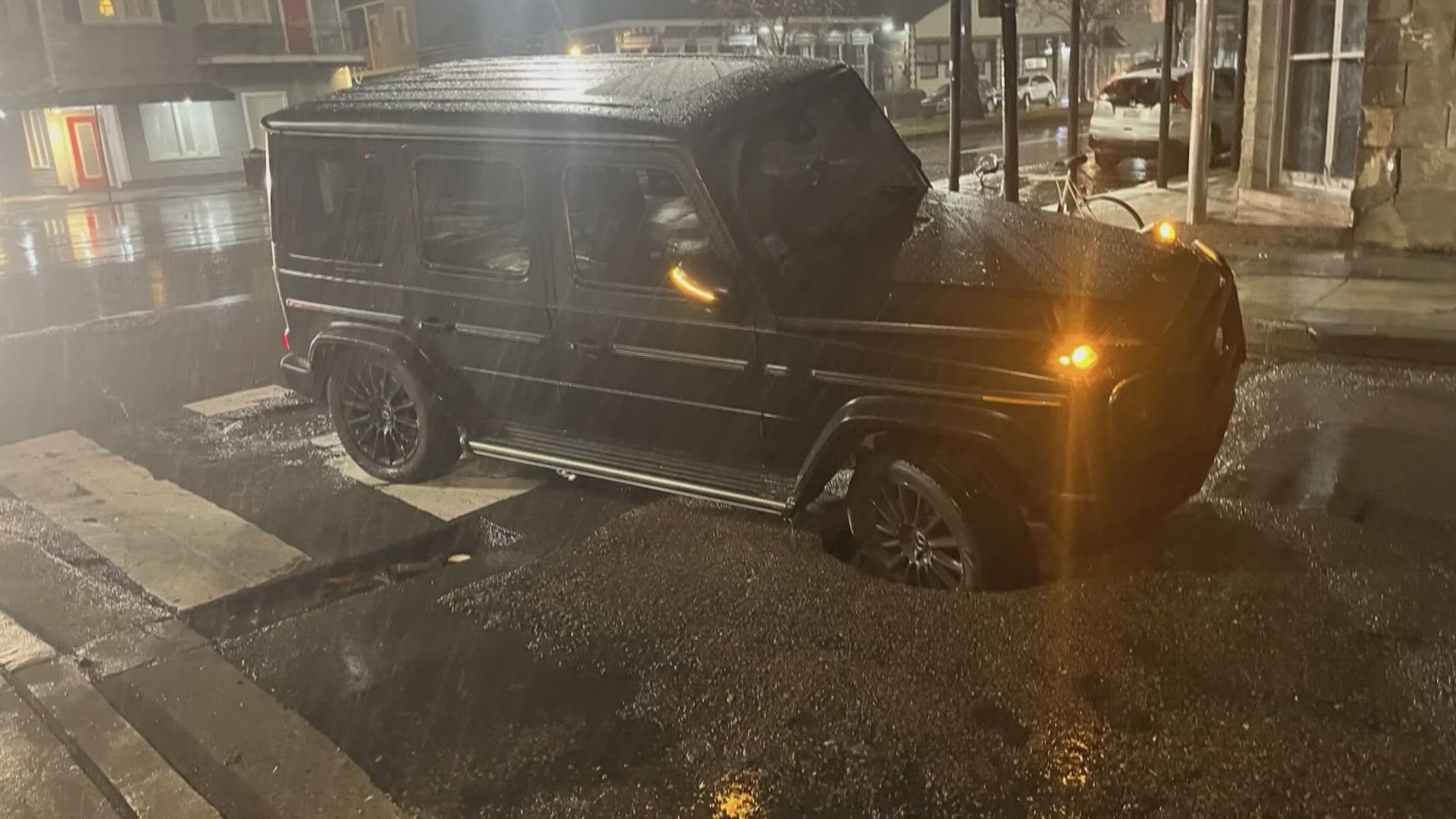NEW ORLEANS — Thursday night we showed you a story of a driver who was on her way to the symphony, but ended up instead crashing into a deep hole in the street.
WWL Louisiana has an update to that and the other stories of drivers being swallowed up in large street holes.
A man who saw us doing this story about all the vehicles in potholes lately said he just moved to New Orleans from Kansas, and he'd never seen such bad streets in his life.
Well, we found a possible explanation as to why it seems like we're seeing more potholes.
A school bus was stuck in a hole on General Ogden Street.
A Mercedes-Benz truck on St. Philip Street, and on Poydras Street, the driver of an Audi falls into a big hole near the Caesars Superdome.
“There's a sign there, that is off, that would probably when it is on, direct the traffic not to come this way. There were no, there were no barriers to where I wanted to go,” said Kathryn Hill.
This morning the hole on Poydras was being filled in, by noon it was completely filled in.
So, we wanted to ask the city some questions. They answered with a statement saying "Yesterday, Sewerage and Water Board crews were working to repair a water leak on Poydras and Liberty. As planned, crews are continuing work today to complete this work. It is important to note that this was not a sinkhole but an active construction zone." The city sent a picture showing that traffic controls were in place at the time the Audi driver went in. They say safety measures are being increased. They also added:
"Soil contracts during periods of drought. Because of our recent historic drought, the soils under the streets have become more concentrated, which means a pothole could become deeper because there is less soil beneath it due to the lack of rain."
So, we turned to the expertise of a civil engineer who explained that the city sits on sand and clay built up by the river.
“And clay when it dries, it shrinks. So, the water takes up space, and typically we have a very wet climate, so typically we've got nice plumped-up clay layers. When things get dry, the water migrates out, evaporates, and the clay shrinks. So, yes, more than likely we are seeing worse pothole situations because of the drought that we experienced this past summer,” said Norma Jean Mattei, a UNO Professor Emeritus of Civil and Environmental Engineering.
And she added that federal dollars have come into the city to do infrastructure work, which oftentimes involves the utilities underneath the roadways.
The work, she says has to be done in small contracts at a time, so that a large area of businesses, and your homes and driveways, are not blocked off all at one time, for a long period of time.
To report potholes call 311. If there is a water leak with it, call 52-WATER.

